 Week #12
Week #12
“Are you ready to get your hands dirty?” That was the response I received when I asked to get a closer look at the operations of our drug testing laboratory.
Mendi Houston, our job-sharing marketing intern, works full-time in our toxicology lab. Since we’ve worked together on marketing projects for the past couple of months, I thought it would be good to see what she does in the lab on a daily basis. I told her that in order for me to do my job better, I need to fully understand the processes and procedures that our urine, hair and oral fluid specimens go through while being tested.
Mendi was more than happy to oblige my request.
Our lab receives specimens overnight and they are processed first thing in the morning. When I say first thing, I literally mean first thing – Mendi’s shift begins at 4:00 a.m. as the early start helps to ensure timely turnaround times. Since I’m not a morning person, I told her I would meet her outside the lab entrance at 8:00.
When I entered the lab, Mendi gave me a lab coat and some gloves and said “Let’s get to work.” We have a designated area where our employees remove the specimen containers and Custody and Control Forms (CCFs) from the shipping materials. Once removed, the specimens and their corresponding paperwork are given to Lab Technicians like Mendi who initiate the testing process. This is where I came in. In the hour I shadowed Mendi, I helped to scan CCFs and pour urine samples into testing tubes. I then placed barcoded stickers on both the CCFs and specimen tubes to help ensure donor anonymity and specimen tracking throughout the process.
I learned three important lessons during my hour in specimen processing. First, a lot of tests come through our laboratory every day, and as such it takes a small army of people to work through the volume of work. Second, Mendi and hundreds of other specimen processors like her are truly experts at their craft – I was amazed at how quickly and accurately they work – all in the name of reliable results and fast turnaround times. And third, while this experience took me out of my comfort zone, I learned a valuable lesson about our We’re There When You Need Us commitment. We put our customers first and do everything we can to sustain and improve the process – even if it means getting our hands dirty every once in a while.
Watch our virtual laboratory tour to learn more.
For more information about drug testing, visit our website or contact us online.
As a new employee at Quest Diagnostics, there’s hardly a day that goes by that I don’t learn something new about the world of drug testing. Like some of you, I have a lot to learn about the industry. During my first year of employment, I’m going to write this weekly column highlighting drug testing procedures, products and processes as I discover them. To learn more about my journey, you can read my introductory post.
 Your Privacy Choices
|
Privacy Notices
|
Terms
|
Language Assistance / Non-Discrimination Notice | Asistencia de Idiomas / Aviso de no Discriminación | 語言協助 / 不䈚視通知
Your Privacy Choices
|
Privacy Notices
|
Terms
|
Language Assistance / Non-Discrimination Notice | Asistencia de Idiomas / Aviso de no Discriminación | 語言協助 / 不䈚視通知
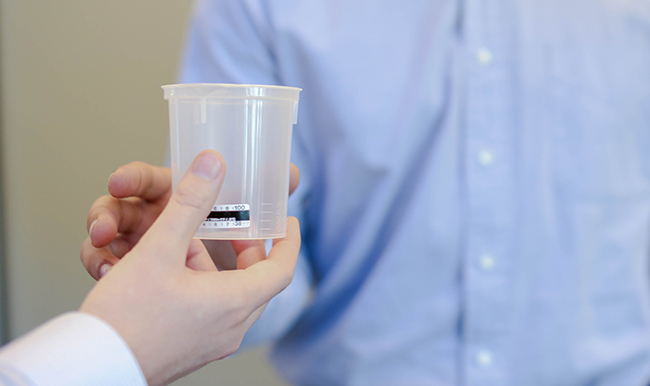
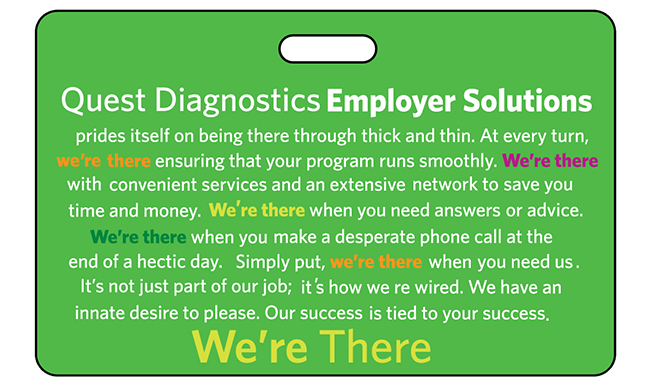

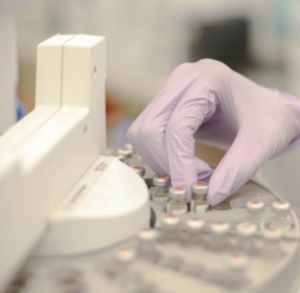
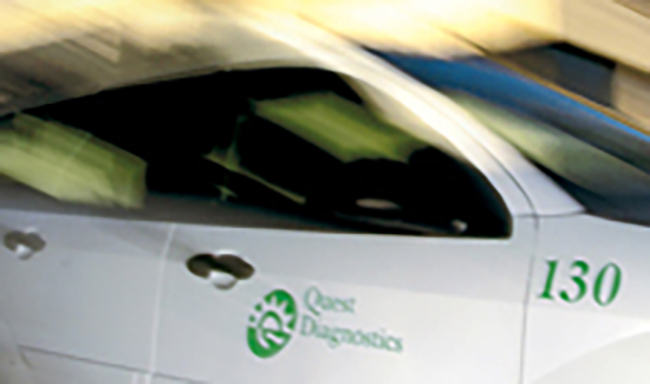
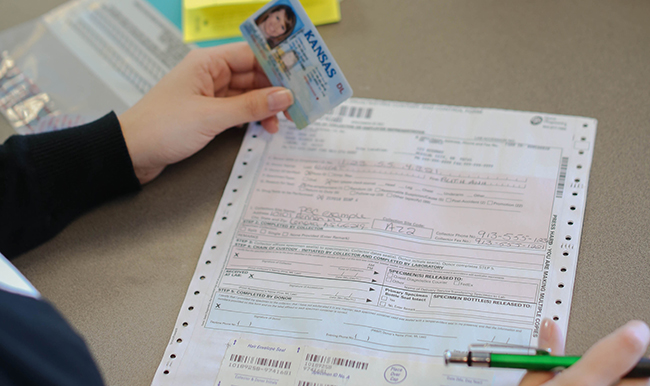
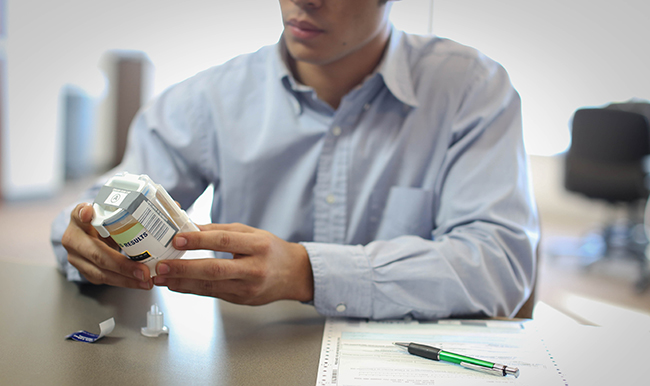
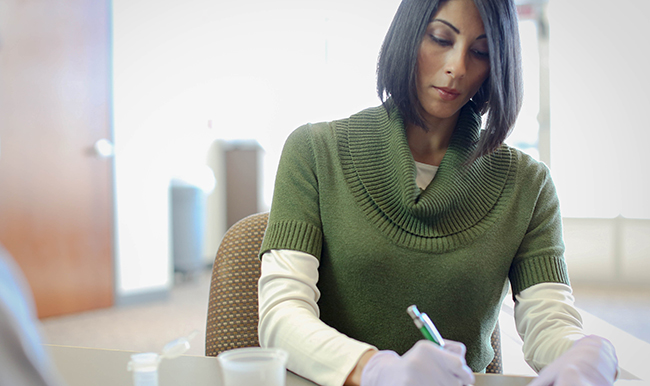
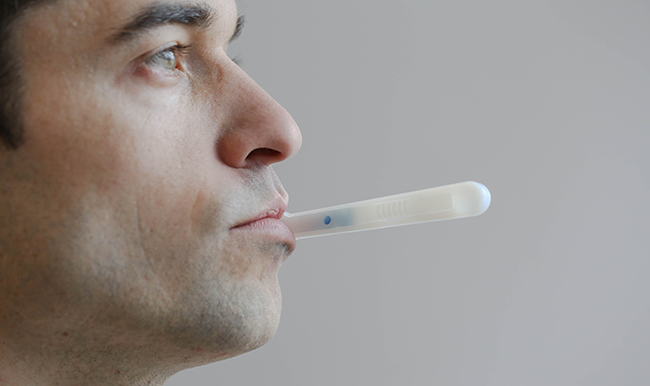
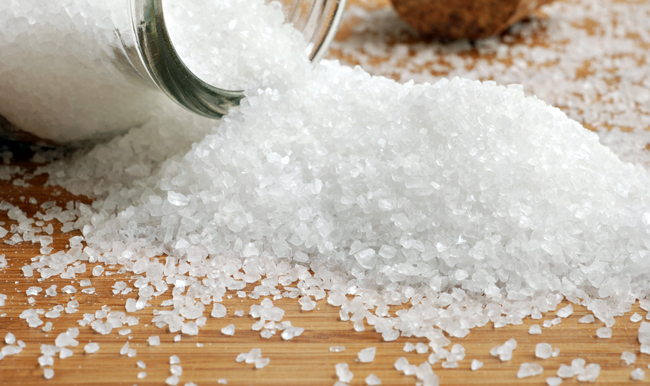
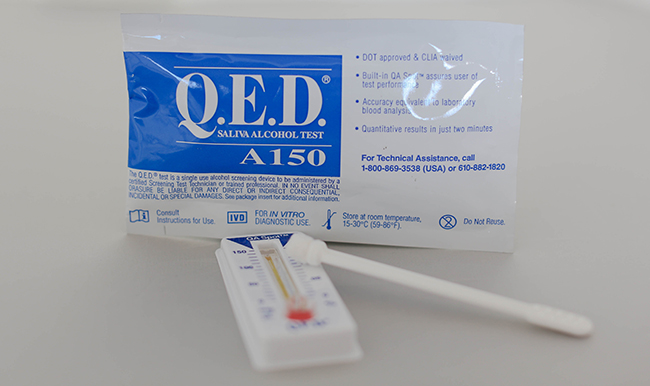

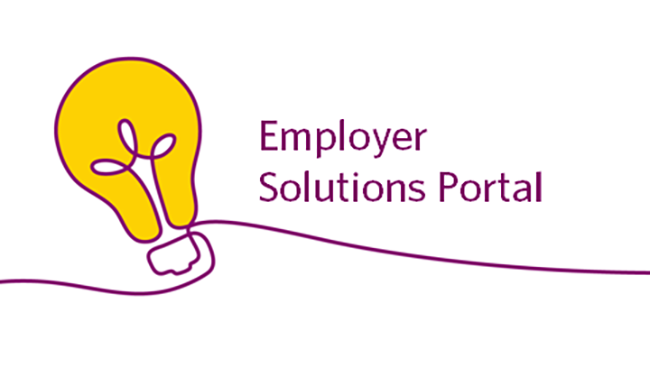
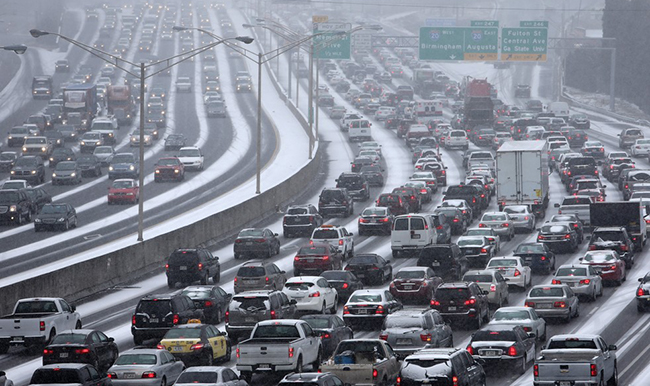
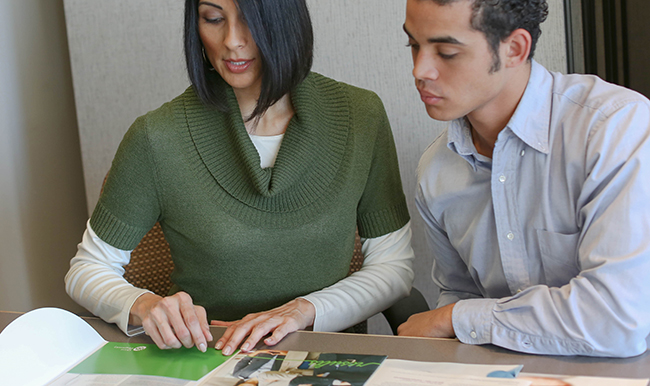




“Are you ready to get your hands dirty?” That was the response I received when I asked to get a closer look at the operations of our drug testing laboratory.
Mendi Houston, our job-sharing marketing intern, works full-time in our toxicology lab. Since we’ve worked together on marketing projects for the past couple of months, I thought it would be good to see what she does in the lab on a daily basis. I told her that in order for me to do my job better, I need to fully understand the processes and procedures that our urine, hair and oral fluid specimens go through while being tested.
Mendi was more than happy to oblige my request.
Our lab receives specimens overnight and they are processed first thing in the morning. When I say first thing, I literally mean first thing – Mendi’s shift begins at 4:00 a.m. as the early start helps to ensure timely turnaround times. Since I’m not a morning person, I told her I would meet her outside the lab entrance at 8:00.
When I entered the lab, Mendi gave me a lab coat and some gloves and said “Let’s get to work.” We have a designated area where our employees remove the specimen containers and Custody and Control Forms (CCFs) from the shipping materials. Once removed, the specimens and their corresponding paperwork are given to Lab Technicians like Mendi who initiate the testing process. This is where I came in. In the hour I shadowed Mendi, I helped to scan CCFs and pour urine samples into testing tubes. I then placed barcoded stickers on both the CCFs and specimen tubes to help ensure donor anonymity and specimen tracking throughout the process.
I learned three important lessons during my hour in specimen processing. First, a lot of tests come through our laboratory every day, and as such it takes a small army of people to work through the volume of work. Second, Mendi and hundreds of other specimen processors like her are truly experts at their craft – I was amazed at how quickly and accurately they work – all in the name of reliable results and fast turnaround times. And third, while this experience took me out of my comfort zone, I learned a valuable lesson about our We’re There When You Need Us commitment. We put our customers first and do everything we can to sustain and improve the process – even if it means getting our hands dirty every once in a while.
Watch our virtual laboratory tour to learn more.
For more information about drug testing, visit our website or contact us online.
As a new employee at Quest Diagnostics, there’s hardly a day that goes by that I don’t learn something new about the world of drug testing. Like some of you, I have a lot to learn about the industry. During my first year of employment, I’m going to write this weekly column highlighting drug testing procedures, products and processes as I discover them. To learn more about my journey, you can read my introductory post.